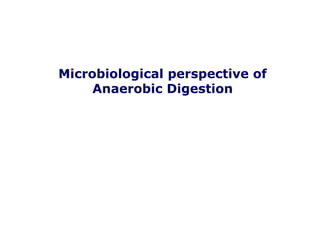Recommended
Recommended
More Related Content
What's hot
What's hot (20)
Routine analysis of wastewaters quality parameters

Routine analysis of wastewaters quality parameters
ESTIMATION OF DO, BOD AND COD IN CANAL WATER SAMPLE

ESTIMATION OF DO, BOD AND COD IN CANAL WATER SAMPLE
Chemical characteristics of sewage and their testing 

Chemical characteristics of sewage and their testing
Download-manuals-water quality-wq-training-15understandingbodtest

Download-manuals-water quality-wq-training-15understandingbodtest
Viewers also liked
Phylyp Wagner & Matt Quattlebaum • H. Beck
- How often should you review your investment returns? The results may surprise you by Jerry Wagner
- The most scrutinized Fed rate hike ever?
- Recent Q1 highs lacked “oomph” by Tony Dwyer
- Expanding the family business tradition (Jeff Pesta, LPL Financial)Phylyp Wagner, CFP & Matt Quattlebaum, CFP – Proactive Advisor Magazine – Vol...

Phylyp Wagner, CFP & Matt Quattlebaum, CFP – Proactive Advisor Magazine – Vol...Proactive Advisor Magazine
Viewers also liked (11)
Phylyp Wagner, CFP & Matt Quattlebaum, CFP – Proactive Advisor Magazine – Vol...

Phylyp Wagner, CFP & Matt Quattlebaum, CFP – Proactive Advisor Magazine – Vol...
Similar to Biology of Biogas
Similar to Biology of Biogas (20)
16. MICROBIOLOGY AND BIOCHEMISTRY OF BIOGAS PRODUCTION.ppt

16. MICROBIOLOGY AND BIOCHEMISTRY OF BIOGAS PRODUCTION.ppt
Biomethanation of organic waste, Anaerobic degradation,Degradation of organic...

Biomethanation of organic waste, Anaerobic degradation,Degradation of organic...
29103278 water-treatment-technology-tas-3010-lecture-notes-3-water-chemistry

29103278 water-treatment-technology-tas-3010-lecture-notes-3-water-chemistry
Biology of Biogas
- 1. Microbiological perspective of Anaerobic Digestion
- 2. Biological systems An Engineer : 1 + 1 = 2 ! For Biologists : 1 + 1 = Most of the times 2, but can vary from 1 t o 3 No. of occurrence Value of 1+1 1 32 Variation due to biological complexity, environmental factors and uncertainty of measurement.
- 3. Outline • Refreshing some known facts • Aerobic decomposition v/s Anaerobic digestion • Anaerobic digestion process – Stages involved – Factors affecting • Silaging • Composting • Working of Lab Scale CSTR Model: Simulating Large scale model
- 4. Refreshing some known facts • TS / DM : Total Solids / Dry matter • VS / oTS / oDM: Volatile Solids / organic total solids / Organic Dry matter Moisture VS Ash TS • HRT : Hydraulic retention time • OLR : Organic loading rate Amount of VS added per unit of digester volume • VFA :Volatile fatty acids • TIC : Total inorganic carbon • TOC NPK : Total organic carbon Nitrogen, Phosphorus and Potassium • Biogas yield : Biogas produced per kg of VS of the substrate
- 5. Aerobic Decomposition v/s Anaerobic degradation Aerobic Decomposition • Bacteria involved are generally called Aerobes or Aerobic bacteria • Requires O2 growth. • Final oxidation product is CO2 • Converts more carbon from organic material to Bacterial biomass Anaerobic Degradation • Bacteria involved are called as Anaerobes or anaerobic bacteria. • Can not grow in presence of O2. • Final degradation product is CH4. • Converts more carbon to CH4 than to Bacterial biomass.
- 7. Anaerobic digestion process Factors affecting : • Temperature • Organic load • pH • TIC /VFA ration • Ammonia content • H2S content Environmental factor Bacterial activity Biological bell curve
- 8. Silaging • A storage procedure used in western world for Feed storage • Also anaerobic degradation but without methanogens. • Sugars get degraded anaerobically, produces acids like lactic acid and acetic acid. • pH of the feedstock drops up to 3-4. • Bacterial activity reduced so no further loss of biomass. • Acids produced are still in system and can be used in digestion for methane production. • Additives like microbial cultures and acetic acid can be used for enhancement of silaging.
- 9. Composting • Sludge from anaerobic degradation is always considered as very good fertilizer. • EX : Feedstock Methane + CO2 + Sludge (10)C(1)N (4)CH4 + (3)CO2 + (3)C(1)N • C:N of 10:1 is converted to C:N ratio of 3:1. • We feel necessity to dry it further for achieving higher TS also allow for aerobic degradation to remove smell. • Additives like Potash, Chemical NPK or value addition like Vermi composting or added biofertilizer shall generate more revenues.
- 10. Working of Lab Scale CSTR Model: Simulating Large scale conditions Design of the Lab scale CSTR Model Input of crushed feedstock mixture with known pH and adjusted TS of 17% to have 35dayHRT Output with less TS checked for pH, TIC/VFA and Ammonia Biogas collected volume measured and analyzed Stirrer assembly Digester with 3L working volume
- 11. Thank you !
